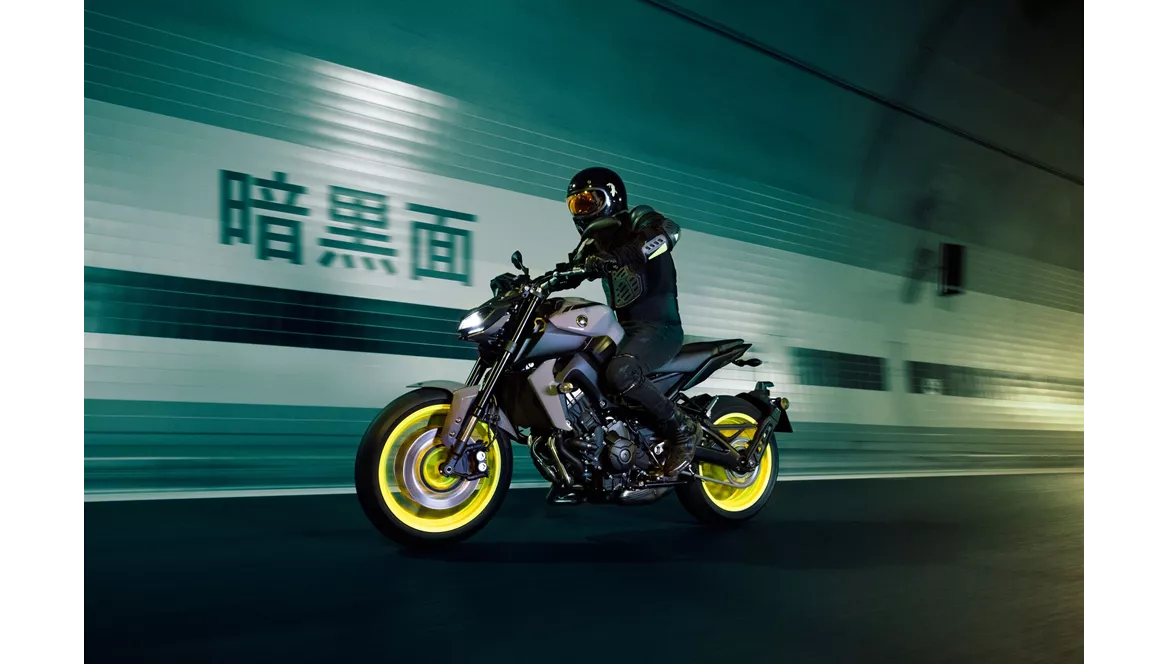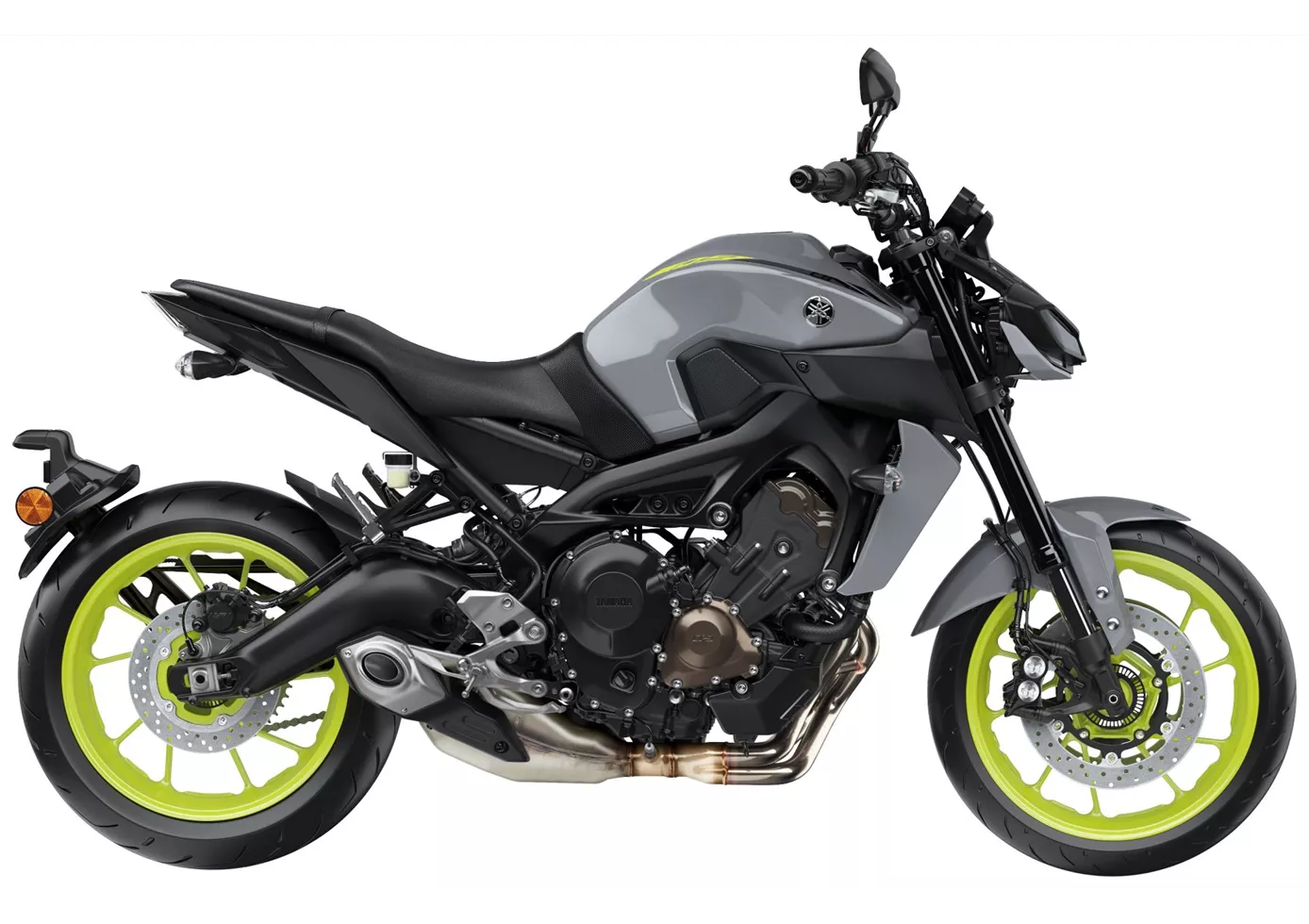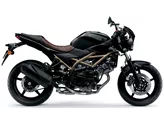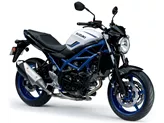Yamaha MT-09 2018 vs. Suzuki SV 650 2021

Yamaha MT-09 2018

Suzuki SV 650 2021
Overview - Yamaha MT-09 2018 vs Suzuki SV 650 2021
The Yamaha MT-09 2018 and the Suzuki SV 650 2021 are both naked bikes that offer unique features and characteristics. Let's compare these two models in terms of their technical specifications and strengths.
In terms of engine and drive train, the Yamaha MT-09 2018 is equipped with an in-line engine that delivers 115 HP of power and 87.5 Nm of torque. It has a fuel injection system and features a 3-cylinder configuration. On the other hand, the Suzuki SV 650 2021 comes with a V-twin engine that produces 73 HP of power and 64 Nm of torque. It also has a fuel injection system and features a 2-cylinder configuration. Both bikes have liquid cooling and a displacement of 847ccm for the Yamaha MT-09 2018 and 645ccm for the Suzuki SV 650 2021.
In terms of suspension, the Yamaha MT-09 2018 is equipped with an upside-down telescopic fork at the front and a swing arm with a monoshock at the rear. The Suzuki SV 650 2021 features a telescopic fork at the front and a swing arm with a monoshock at the rear. Both bikes offer a stable and comfortable suspension system.
In terms of chassis, the Yamaha MT-09 2018 features an aluminum frame with a twin tube design, while the Suzuki SV 650 2021 has a steel frame with a tubular design. Both frames provide stability and durability.

Yamaha MT-09 2018
When it comes to brakes, both bikes are equipped with double disk brakes at the front. The Yamaha MT-09 2018 has a larger diameter of 298mm compared to the 290mm diameter of the Suzuki SV 650 2021. Both bikes offer reliable braking performance.
In terms of advanced rider assistance systems, the Yamaha MT-09 2018 comes with ABS, a quickshifter, and traction control. On the other hand, the Suzuki SV 650 2021 only offers ABS. The Yamaha MT-09 2018 provides additional safety features and enhanced riding experience.
In terms of dimensions and weights, both bikes have a front tire width of 120mm and a front tire diameter of 17 inches. However, the Yamaha MT-09 2018 has a wider rear tire width of 180mm compared to the 160mm of the Suzuki SV 650 2021. Both bikes have a wheelbase of around 1440-1445mm and a similar seat height. The Yamaha MT-09 2018 weighs 193kg with ABS, while the Suzuki SV 650 2021 weighs slightly more at 200kg with ABS. Both bikes have a fuel tank capacity of around 14-14.5 liters.
In terms of strengths, the Yamaha MT-09 2018 offers a perfect harmony between its optics and character. It has smooth wheels, lively handling, and a comfortable seating position even for tall riders. The engine feels incredibly powerful, providing an exhilarating riding experience.

Suzuki SV 650 2021
On the other hand, the Suzuki SV 650 2021 has a confident V2 powerplant with character. It offers a stable chassis, comfortable seating position, and easy handling. The timeless look of the bike adds to its appeal.
However, the Yamaha MT-09 2018 does have some weaknesses. It can be exhausting to ride briskly, and it requires more riding skills compared to other naked bikes in the mid-range. The feeling for traction on the rear wheel is not as great, and there may be a lack of precision in certain aspects.
Similarly, the Suzuki SV 650 2021 has its weaknesses. The brake requires manual force, and there are no additional electronics on board apart from ABS. The instruments may also be moderately readable.
In conclusion, the Yamaha MT-09 2018 and the Suzuki SV 650 2021 are both capable naked bikes with their own unique strengths and weaknesses. The Yamaha MT-09 2018 offers a more powerful engine and advanced rider assistance systems, while the Suzuki SV 650 2021 provides a confident powerplant and a timeless look. Ultimately, the choice between these two models will depend on the rider's preferences and priorities.
Technical Specifications Yamaha MT-09 2018 compared to Suzuki SV 650 2021
Pros and Cons in comparison
Pros and Cons in comparison
Yamaha MT-09 2018

A coherent motorbike where everything fits together. The motorbike delivers what its looks promise. High-tech, charisma and lots of adrenaline. It is a mixture of supermoto, naked bike and streetfighter and it loves to be handled irrationally. A cool motorbike. Only in comparison with the MT-09 SP does one begin to miss a high-quality chassis.
Suzuki SV 650 2021

Not much has changed on the Suzuki SV 650 compared to its predecessor, five years ago. The engine has been updated to Euro5 and is now even more mature, which fits in perfectly with the rest of the package. The SV 650 doesn't want to scare anyone, especially beginners. The chassis makes a solid, unagitated impression, the brakes require a lot of manual force to prevent unexpected overbraking. The look is timeless on the one hand, but on the other hand some components are really a bit outdated. On the other hand, the price is fair, as usual for Suzuki.
Price Comparison Avarage Market Price Yamaha MT-09 vs Suzuki SV 650
There are a few key differences between a Yamaha MT-09 2018 and a Suzuki SV 650 2021. In terms of price, the actual average price of a Yamaha MT-09 2018 is about 47% higher. Compared to Suzuki SV 650 2021 there are more Yamaha MT-09 2018 bikes available on the 1000PS.de Marketplace, specifically 15 compared to 13. It takes less time to sell a Yamaha MT-09 with 72 days compared to 111 days for a Suzuki SV 650. Since model year 2013 1000PS.de editors have written 57 reviews for the Yamaha MT-09 and 25 reviews for the Suzuki SV 650 since model year 2005. The first review for the Yamaha MT-09 was published on 10/06/2013 and now has more than 39,900 views. This compares to more than 14,200 views for the first review on Suzuki SV 650 published on 26/09/2008.






























